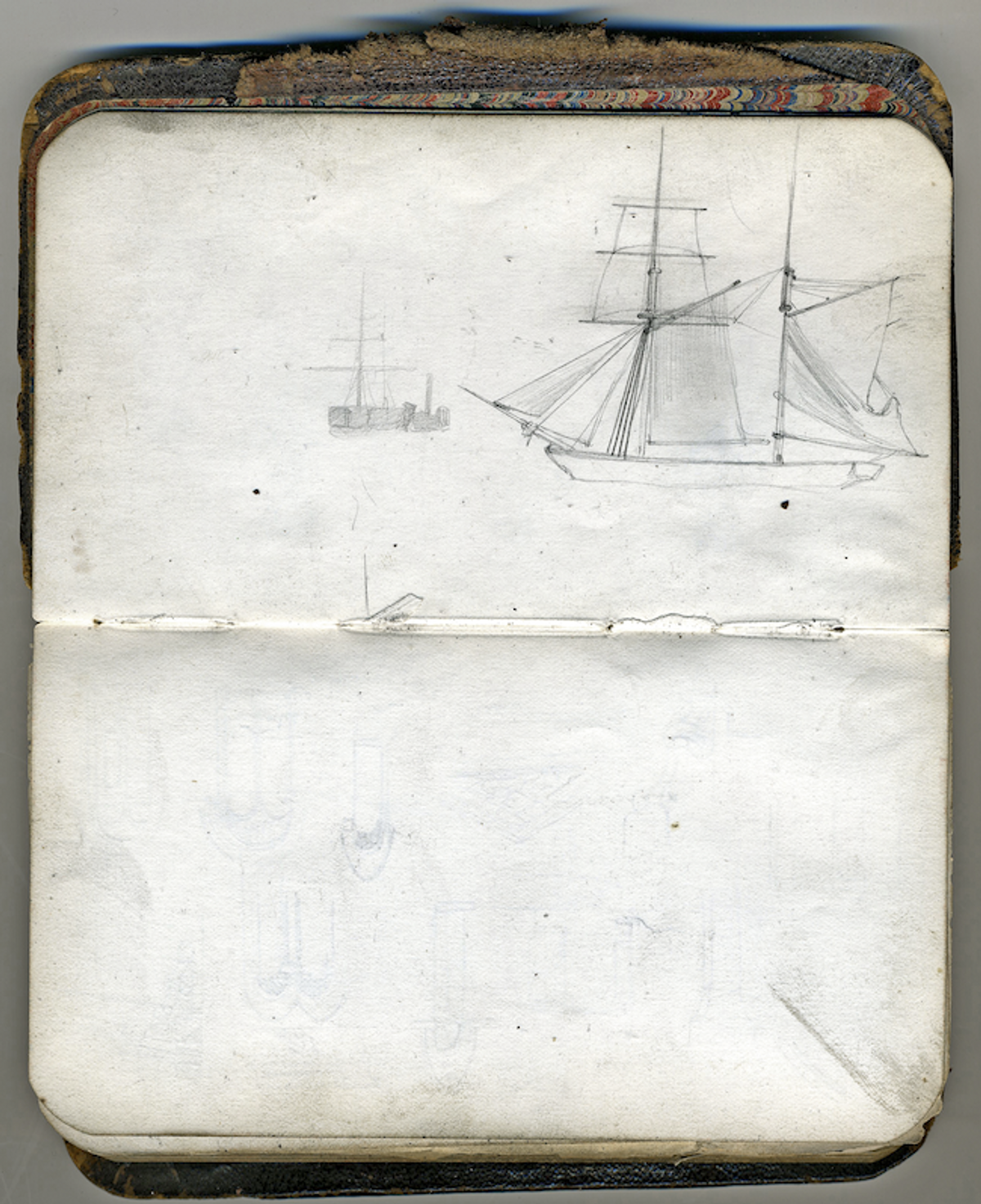 One of the pitfalls of amassing an eclectic collection of "stuff" is that it's often difficult to remember where and under what circumstances you acquired something. That's the case with this sketchbook of W.G. Read's. I came across it at least 30 years ago after having moved to Brooklyn, N.Y., from Madison, Wis. -- that much I know. Other than that, I'm outta luck ...
One of the pitfalls of amassing an eclectic collection of "stuff" is that it's often difficult to remember where and under what circumstances you acquired something. That's the case with this sketchbook of W.G. Read's. I came across it at least 30 years ago after having moved to Brooklyn, N.Y., from Madison, Wis. -- that much I know. Other than that, I'm outta luck ...
As is the case with just about any sketchbook, it's a personal look into an artist's way of working. His choice of what to draw, the attention to details that undoubtedly will be used as reference later, even an article clipped from a Canadian newspaper. You get a rare and intimate feel for Read's process. There's an 1866 calendar affixed to the inside back cover of this 3.5-inch-by-6-inch booklet, but based upon what I've been able to find out (with the help of friends, Nancy Thomson and Margaret Walsh) about Read, it's doubtful that the drawings date from that time period. According to the value source website Worthpoint.com., Walter G. Read (1863-1950) apparently worked in and around the New York area from approximately 1910-1930 and lived in Brooklyn. Based upon information included in his drawing of locations, as well as the newspaper clipping mentioned earlier, this particular sketchbook seems to indicate that he spent at least a portion of his time in Ontario, Canada. For instance, the firm W.D. Hepburn & Co. depicted in one of his studies is listed as a boot and shoe manufacturer located primarily in the western section of Ontario -- possibly Prescott or Preston. Both these towns are on rivers (justifying the nautical-themed sketches) and close to the New York border. Read also drew some fellas with Cricket bats -- another U.K./Canadian indication. All things considered, and taking into account the attire depicted, I'm guessing that these sketches were done in the 1880-1890 period.
W.G. Read's 3.5-inch-by-6-inch leather sketchbook. It's helpful to keep these dimensions in mind while scrolling through the pics below. The pencil drawings are quite small and delicate. I chose to include many, but not all the pages in the sketchbook, to give a comprehensive feel of what his process must have been like. Please click on the images for closer, enlarged views.
 Editorial writing has changed quite a bit since this was written...
Editorial writing has changed quite a bit since this was written...
 W.G. Read's signature is in the upper left -- his pencil sharpening is in the lower left...
W.G. Read's signature is in the upper left -- his pencil sharpening is in the lower left...
 LOVE the "bearded man" study ! Anyone know what the contraption on the lower right might be ? Looks like a 1965 Bell & Howell projector...
LOVE the "bearded man" study ! Anyone know what the contraption on the lower right might be ? Looks like a 1965 Bell & Howell projector...
 The signage here helped determine possible locations in Canada. W.D. Hepburn was a boot and shoe manufacturer in western Canada.
The signage here helped determine possible locations in Canada. W.D. Hepburn was a boot and shoe manufacturer in western Canada.
 Incredible detail for a 3.5-inch-by-6-inch drawing.
Incredible detail for a 3.5-inch-by-6-inch drawing.
 Click on the drawing of the boat for finer detail.
Click on the drawing of the boat for finer detail.
The color images below were assembled from examples found online.
Two watercolor studies stamped "Estate Of Walter G. Read Brooklyn N.Y. 1915"
A Fairbanks Fairy Soap calender lithograph from 1898.
"The Sinking of the La Bourgogne" Lithograph 1898.
Nancy Thomson and Margaret Walsh helped with research on this piece and Corrie Lebens assisted in production.
Copyright F+W Media Inc. 2011.
Salon is proud to feature content from Imprint, the fastest-growing design community on the web. Brought to you by Print magazine, America's oldest and most trusted design voice, Imprint features some of the biggest names in the industry covering visual culture from every angle. Imprint advances and expands the design conversation, providing fresh daily content to the community (and now to salon.com!), sparking conversation, competition, criticism, and passion among its members.






























 </a></p> <p style=" />
</a></p> <p style=" />















Shares